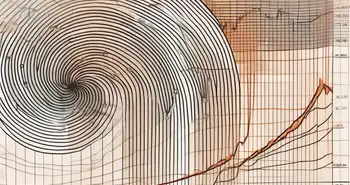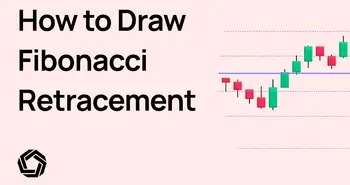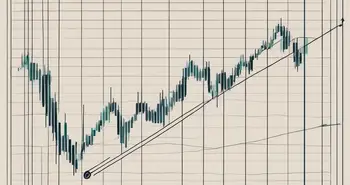The Fibonacci Sequence in Forex

As an expert in forex trading, I can confidently say that understanding the Fibonacci sequence is crucial to developing effective trading strategies. The Fibonacci sequence, named after its Italian mathematician Leonardo Fibonacci, has a profound impact on analyzing market trends and identifying entry and exit points. In this article, I will delve into the various aspects of the Fibonacci sequence and its implications in forex trading.
Understanding the Fibonacci Sequence
The Mathematical Concept Behind Fibonacci Sequence
Before exploring its application in forex trading, it's important to grasp the mathematical concept underlying the Fibonacci sequence. The sequence is created by adding the two preceding numbers together to obtain the subsequent number. Starting with 0 and 1, the sequence unfolds as follows: 0, 1, 1, 2, 3, 5, 8, 13, and so on. These numbers possess unique properties that make them highly relevant in financial markets.
The Fibonacci sequence, named after the Italian mathematician Leonardo Fibonacci, has fascinated mathematicians and scientists for centuries. Its simplicity and elegance have made it a subject of study in various fields, including mathematics, biology, and art. The sequence can be found in nature, such as the arrangement of leaves on a stem, the spirals of a pinecone, or the petals of a flower. This natural occurrence has led to the belief that the Fibonacci sequence represents a fundamental pattern in the universe.
Mathematically, the Fibonacci sequence can be defined by the recursive formula: Fn = Fn-1 + Fn-2, with F0 = 0 and F1 = 1. Each number in the sequence is the sum of the two preceding numbers. As the sequence progresses, the ratio between consecutive numbers approaches a constant value known as the “golden ratio,” approximately equal to 1.6180339887.
Fibonacci Numbers and Their Unique Properties
One notable property of Fibonacci numbers is the ratio they create when divided successively. This ratio is known as the “golden ratio,” approximately equal to 1.618. Traders often use the Fibonacci retracement levels, which are derived from this ratio, to identify potential support and resistance levels in the market. The most commonly used retracement levels are 38.2%, 50%, and 61.8%. These levels can be instrumental in determining optimal entry and exit points in forex trading.
The golden ratio has been a subject of fascination for artists and architects throughout history. It is believed to represent a sense of aesthetic harmony and balance. Many famous works of art and architecture, such as the Parthenon in Athens and the Mona Lisa by Leonardo da Vinci, are said to incorporate the golden ratio in their proportions. This connection between mathematics and aesthetics highlights the universal appeal and significance of the Fibonacci sequence.
In addition to its artistic and mathematical applications, the Fibonacci sequence also plays a role in various scientific phenomena. For example, in biology, the arrangement of leaves on a stem often follows a pattern based on Fibonacci numbers. This pattern allows each leaf to receive maximum exposure to sunlight and rain, optimizing the plant's growth and survival. The spiral patterns found in seashells and galaxies also exhibit Fibonacci-like characteristics, further illustrating the ubiquity of this sequence in nature.
Furthermore, the Fibonacci sequence has practical applications in computer science and algorithms. Its recursive nature and predictable patterns make it useful in generating random numbers, searching and sorting algorithms, and data compression techniques. The sequence's simplicity and efficiency have made it a valuable tool in various computational fields.
In conclusion, the Fibonacci sequence is not only a mathematical curiosity but also a fundamental pattern that appears in nature, art, and science. Its unique properties, such as the golden ratio and the Fibonacci retracement levels, have made it relevant in financial markets, forex trading, and other fields. Understanding the Fibonacci sequence opens up a world of possibilities for exploring the interconnectedness of mathematics and the natural world.
The Fibonacci Sequence in Forex Trading
The Fibonacci sequence is a mathematical concept that has found its way into various fields, including forex trading. Traders have discovered the relevance of Fibonacci levels in analyzing market trends and making informed trading decisions. By understanding the role of Fibonacci retracements and extensions, traders can gain valuable insights into potential price levels and profit targets.
The Role of Fibonacci Levels in Market Analysis
When analyzing market trends, Fibonacci levels provide traders with valuable insights. These levels are derived from the Fibonacci sequence, a series of numbers where each number is the sum of the two preceding ones (e.g., 0, 1, 1, 2, 3, 5, 8, 13, 21, and so on). By applying the Fibonacci retracement tool to a significant market swing, traders can identify potential price levels where the market may reverse or consolidate.
These Fibonacci levels act as psychological barriers that influence the behavior of market participants. Traders often observe that when the price approaches these levels, there is a higher probability of a reversal or consolidation. This phenomenon occurs because many traders use Fibonacci levels as reference points for entering or exiting trades, leading to increased buying or selling pressure at these levels. As a result, Fibonacci levels reinforce their significance in forex trading.
Fibonacci Retracements and Extensions in Forex
In addition to Fibonacci retracements, traders also utilize Fibonacci extension levels to enhance their trading strategies. Fibonacci extensions are projections beyond the initial market swing, based on the Fibonacci ratios. By projecting these ratios, traders can anticipate zones where the price might reach based on historical price movements.
These Fibonacci extension levels help traders identify potential profit-taking areas or price targets. For example, if a trader identifies a significant market swing and projects the Fibonacci extensions, they can anticipate areas where the price might reach and consider taking profits or adjusting their trading positions accordingly. Incorporating Fibonacci extensions into a trading strategy can provide traders with valuable guidance for setting profit targets and managing their trades effectively.
It is important to note that while Fibonacci levels can be useful in forex trading, they should not be used in isolation. Traders should always consider other technical indicators, fundamental analysis, and market conditions to make well-informed trading decisions.
Impact of the Fibonacci Sequence on Trading Strategies
The Fibonacci sequence, a mathematical pattern that has fascinated mathematicians and traders alike, has found its way into the world of trading strategies. Traders have discovered that incorporating Fibonacci levels into their trading strategies can enhance their decision-making process and potentially increase their chances of success.
When traders incorporate Fibonacci levels into their strategies, they are essentially using these levels as potential areas of support and resistance. By identifying key Fibonacci levels, such as the 38.2%, 50%, and 61.8% retracement levels, traders can pinpoint areas where price may reverse or continue its trend.
However, it's important to note that Fibonacci levels are not standalone indicators. Traders should use them in conjunction with other technical indicators to validate signals. By combining Fibonacci analysis with other tools, such as moving averages or trend lines, traders can gain a more comprehensive view of the market and make more informed trading decisions.
Incorporating Fibonacci Levels into Trading Strategies
Traders often wonder how exactly they can incorporate Fibonacci levels into their trading strategies. One common approach is to use Fibonacci retracement levels to identify potential entry and exit points. For example, if a trader identifies a strong uptrend and believes that a pullback is likely, they may look for potential buying opportunities near the 38.2% or 50% retracement levels.
Another way to incorporate Fibonacci levels is by using them to set profit targets. Traders can identify Fibonacci extension levels to determine where price may reach after a significant move. By setting profit targets at these levels, traders can take profits and potentially maximize their gains.
Furthermore, Fibonacci levels can also be used in combination with other technical indicators, such as oscillators or volume indicators, to confirm potential trade setups. For example, if a trader identifies a potential reversal near a key Fibonacci level and sees a bullish divergence on an oscillator, it may provide additional confirmation for a trade entry.
The Effectiveness of Fibonacci-Based Trading
While the use of Fibonacci levels is widely popular among traders, it's essential to understand that no indicator or tool guarantees success in forex trading. The effectiveness of Fibonacci-based trading ultimately relies on traders' ability to interpret and analyze market data accurately.
Successful Fibonacci-based trading requires a deep understanding of market dynamics and the ability to identify key levels accurately. Traders must be able to recognize when a Fibonacci level is likely to hold as support or resistance and when it is more likely to be breached.
Moreover, it is crucial to combine Fibonacci analysis with proper risk management techniques and thorough market research. Traders should not solely rely on Fibonacci levels but should also consider other factors, such as market sentiment, economic news, and geopolitical events, to develop a well-rounded trading strategy.
In conclusion, while Fibonacci levels can be a valuable tool in trading strategies, they should be used as part of a comprehensive approach. Traders should combine Fibonacci analysis with other technical indicators, exercise proper risk management, and stay informed about market conditions to increase their chances of success in the dynamic world of trading.
Advanced Fibonacci Techniques in Forex Trading
Fibonacci Arcs and Their Application in Forex
Beyond retracement and extension levels, traders can explore advanced Fibonacci techniques, such as Fibonacci arcs. Fibonacci arcs help identify potential areas of support and resistance based on circular arcs drawn above and below the price chart. By combining these arcs with other technical tools, traders can gain a deeper understanding of the market's potential turning points.
Fibonacci Fans and Time Zones in Market Prediction
Another advanced technique is the Fibonacci fans and time zones. By plotting trendlines based on specific Fibonacci ratios, traders can identify potential areas of support and resistance. Additionally, Fibonacci time zones help anticipate important market turning points based on the passage of time. These advanced Fibonacci techniques provide traders with additional tools to improve their market prediction capabilities.
Risks and Limitations of Using Fibonacci in Forex Trading
Understanding the Potential Drawbacks
While Fibonacci analysis can be a powerful tool, it's crucial to be aware of its limitations. One limitation is the subjectivity in identifying swing points to draw Fibonacci retracements and extensions. Different traders may use different swing points, leading to variations in their analysis. Additionally, Fibonacci levels are not foolproof indicators and should be used in conjunction with other technical analysis tools and risk management strategies.
Mitigating Risks Associated with Fibonacci Trading
To mitigate the risks associated with Fibonacci trading, it's vital for traders to continuously educate themselves and gain experience in applying Fibonacci analysis. Developing a robust understanding of price action, candlestick patterns, and other technical analysis tools can supplement Fibonacci analysis and enhance its effectiveness. Risk management practices, such as setting stop-loss orders and taking profits at predetermined levels, are also essential in managing downside risks.
FAQs: Frequently Asked Questions
1. What is the Fibonacci sequence?
The Fibonacci sequence is a series of numbers where each number is the sum of the two preceding numbers. It starts with 0 and 1, creating a sequence like 0, 1, 1, 2, 3, 5, 8, 13, and so on.
2. How do Fibonacci levels help in forex trading?
Fibonacci levels help identify potential support and resistance areas in the market. They can assist traders in determining entry and exit points and setting profit targets based on historical price movements.
3. Are Fibonacci levels reliable indicators for trading?
While Fibonacci levels are widely used and respected in trading, it's important to remember that they should not be the sole basis for trading decisions. They should be used in conjunction with other technical analysis tools and risk management strategies.
In conclusion, the Fibonacci sequence has a significant impact on trading strategies in forex markets. By understanding and utilizing the various Fibonacci levels, traders can enhance their analysis and improve their decision-making process. However, it's crucial to recognize the limitations and implement proper risk management techniques. Incorporating Fibonacci analysis into trading strategies can empower traders to navigate the dynamic forex market with more confidence and precision.
Ready to take your forex trading strategies to the next level with the power of the Fibonacci sequence? Discover the innovative world of Morpher, where you can apply these techniques on a state-of-the-art platform that leverages blockchain technology for zero fees and infinite liquidity. Whether you're looking to trade forex, stocks, cryptocurrencies, or even unique markets, Morpher offers fractional investing, short selling without interest fees, and up to 10x leverage to maximize your trading potential. Experience the future of trading with the safety and control of a non-custodial Morpher Wallet. Sign Up and Get Your Free Sign Up Bonus today, and join the community of traders who are reshaping the landscape of investing.

Disclaimer: All investments involve risk, and the past performance of a security, industry, sector, market, financial product, trading strategy, or individual’s trading does not guarantee future results or returns. Investors are fully responsible for any investment decisions they make. Such decisions should be based solely on an evaluation of their financial circumstances, investment objectives, risk tolerance, and liquidity needs. This post does not constitute investment advice.

Painless trading for everyone
Hundreds of markets all in one place - Apple, Bitcoin, Gold, Watches, NFTs, Sneakers and so much more.

Painless trading for everyone
Hundreds of markets all in one place - Apple, Bitcoin, Gold, Watches, NFTs, Sneakers and so much more.









